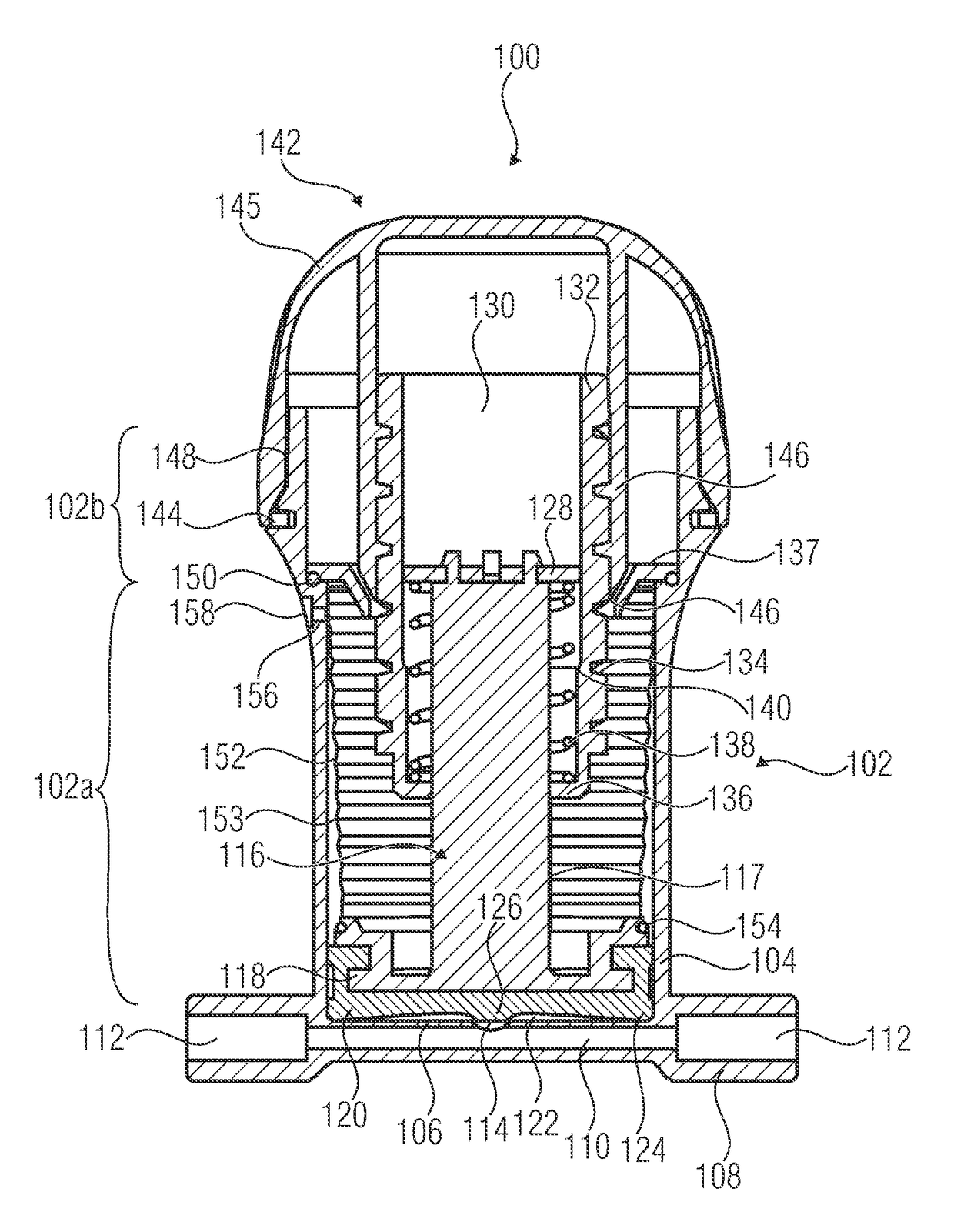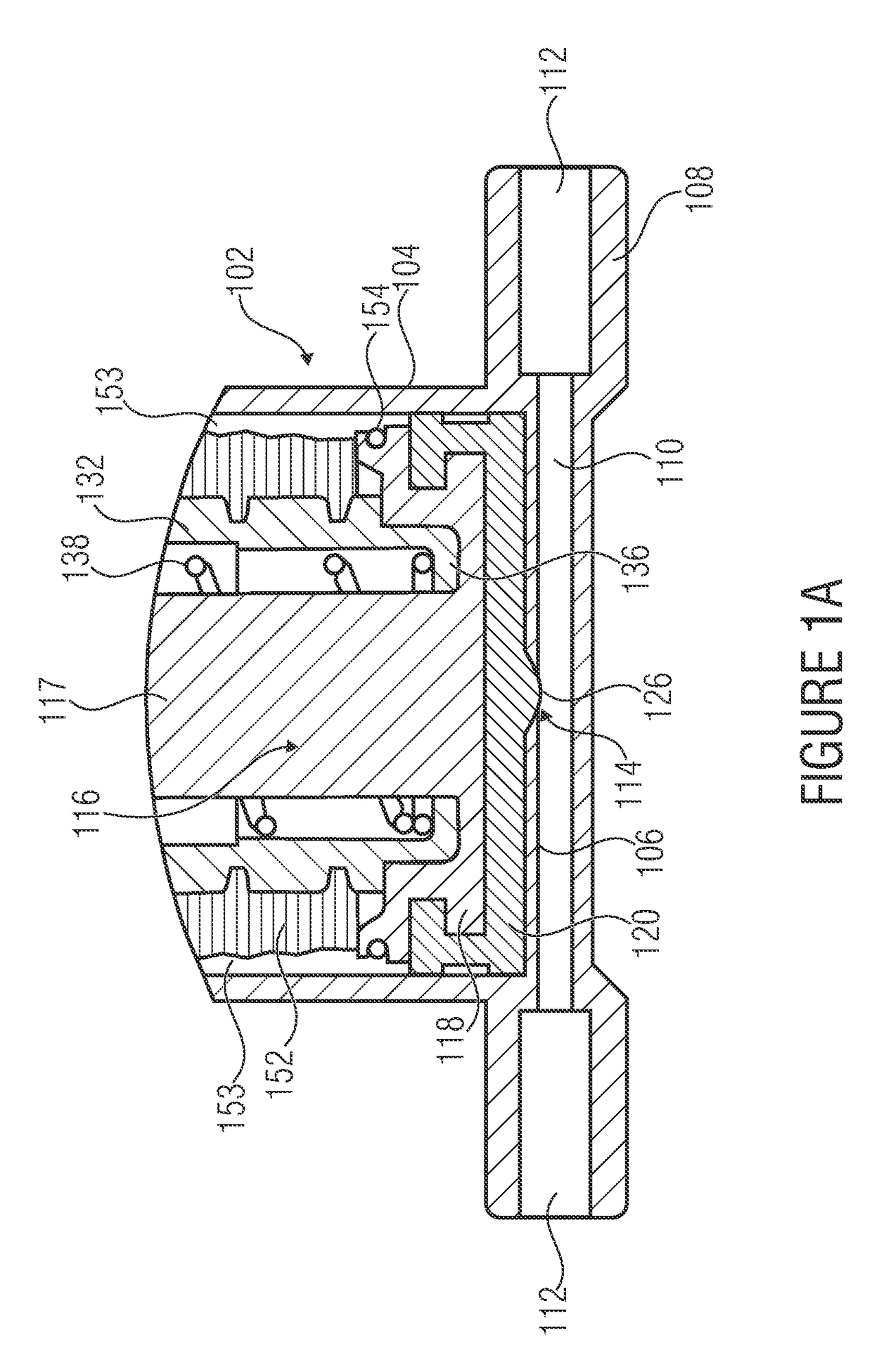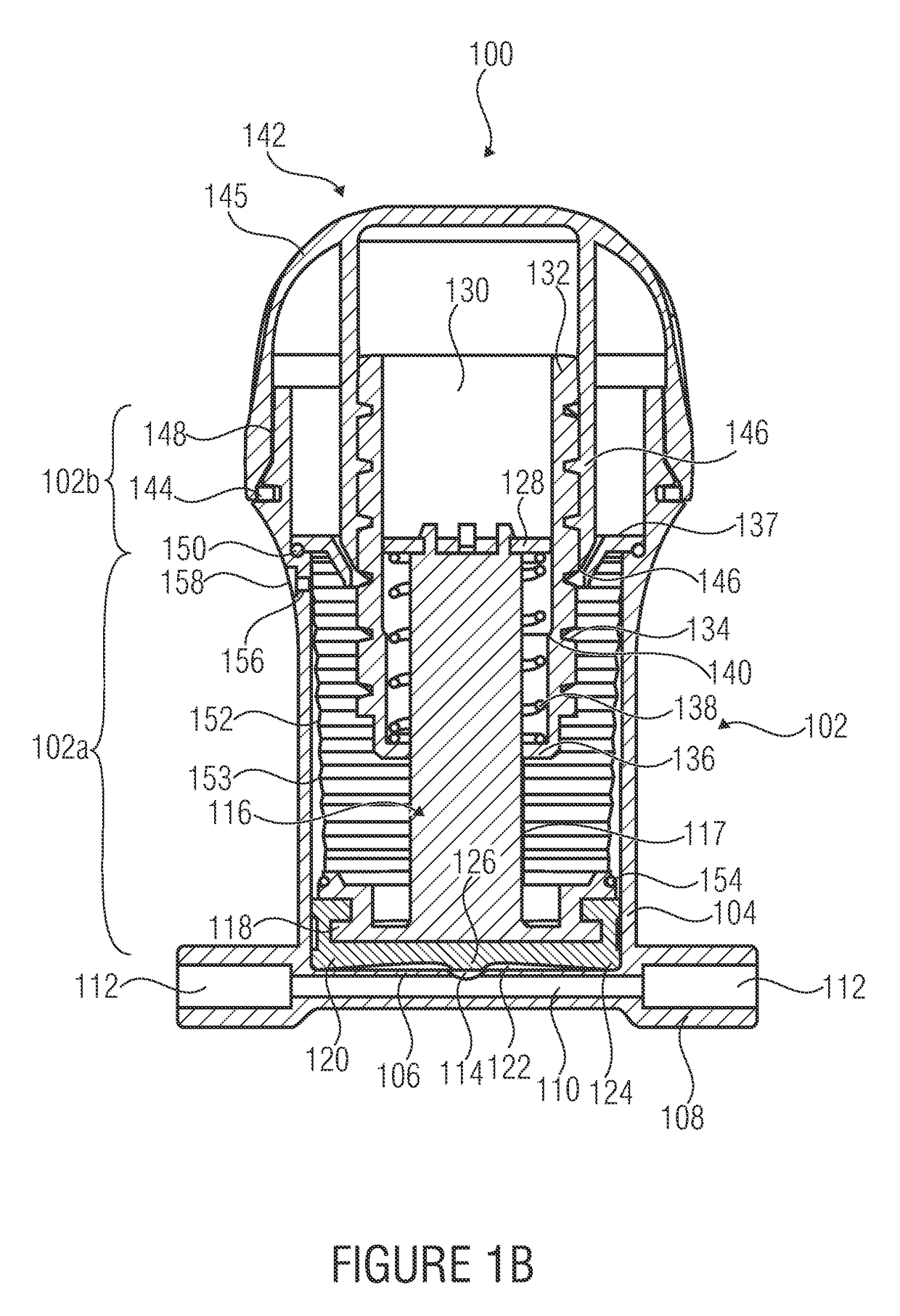Fluid handling device having a spring mechanism
a technology of spring mechanism and handling device, which is applied in the field of spring mechanism of handling device, can solve the problems of blood cell damage, blood contamination, noticeable loss of liquid, etc., and achieve the effect of increasing the service life and volume of such a spring mechanism
- Summary
- Abstract
- Description
- Claims
- Application Information
AI Technical Summary
Benefits of technology
Problems solved by technology
Method used
Image
Examples
Embodiment Construction
[0031]In the following drawings, identical or similar elements are provided with identical or similar reference numerals, repeated descriptions of the reference numerals being omitted.
[0032]FIG. 1A shows a fluid handling device 100 in accordance with an embodiment of the present invention. Here, the fluid handling device 100 comprises a receiving container 102 having a side wall 104 as well as a planar (i.e. flat) container bottom 106. The receiving container 102 comprises a first portion 102a of cylindrical shape which adjoins the bottom 106 and is adjoined, in turn, by a second portion 102b of cylindrical shape which has a larger internal diameter. In addition, the receiving container 102 is attached to a connecting piece 108 comprising a flow channel 110 between two ports 112 of the connecting piece 108. A fluid opening 114 is centrally arranged, by way of example, in the flat container bottom 106 in such a manner that an exchange of fluid between the connecting channel 110 and t...
PUM
 Login to View More
Login to View More Abstract
Description
Claims
Application Information
 Login to View More
Login to View More - R&D
- Intellectual Property
- Life Sciences
- Materials
- Tech Scout
- Unparalleled Data Quality
- Higher Quality Content
- 60% Fewer Hallucinations
Browse by: Latest US Patents, China's latest patents, Technical Efficacy Thesaurus, Application Domain, Technology Topic, Popular Technical Reports.
© 2025 PatSnap. All rights reserved.Legal|Privacy policy|Modern Slavery Act Transparency Statement|Sitemap|About US| Contact US: help@patsnap.com



